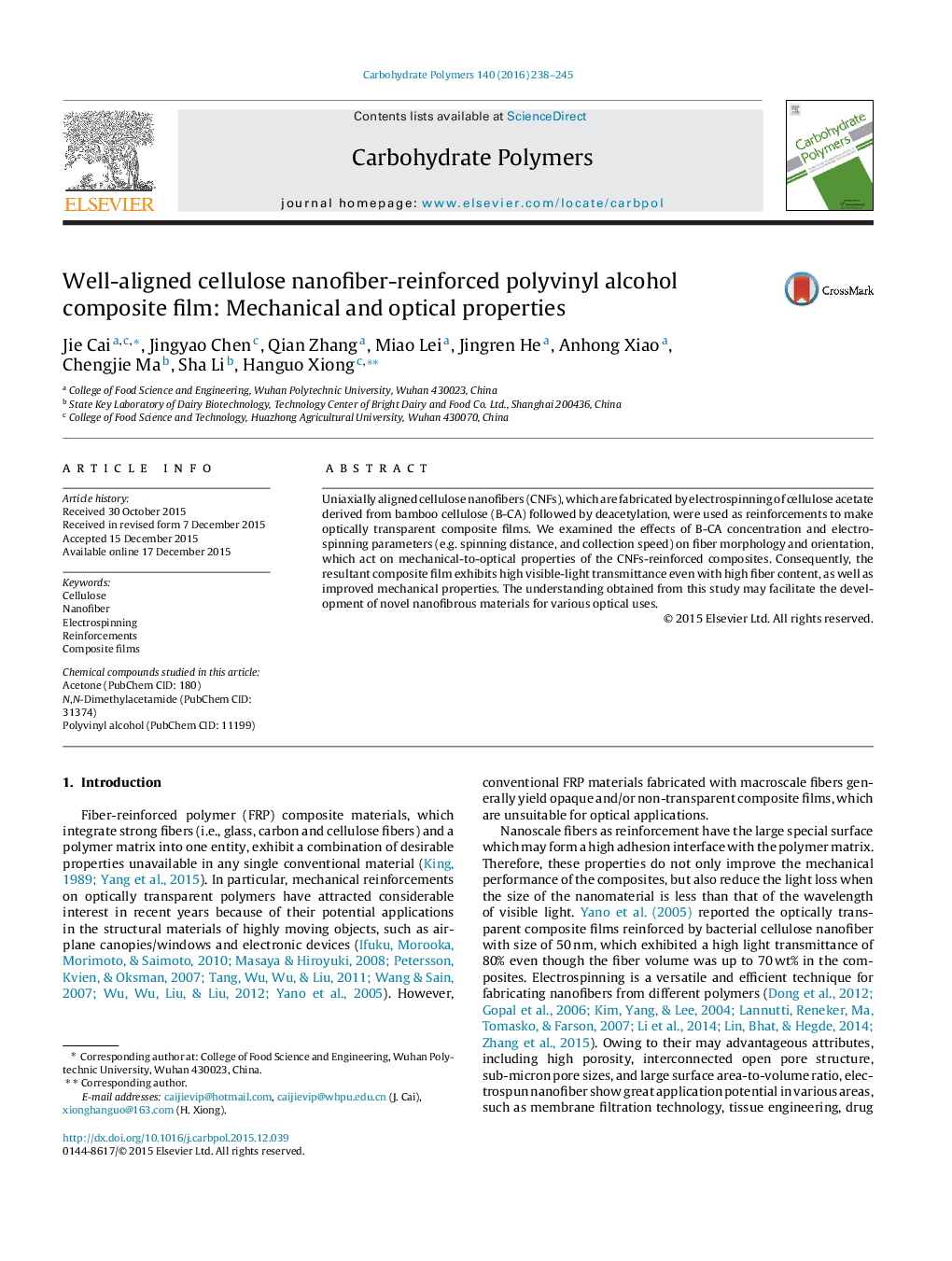| Article ID | Journal | Published Year | Pages | File Type |
|---|---|---|---|---|
| 1383458 | Carbohydrate Polymers | 2016 | 8 Pages |
•An effective method to prepare CNFs-reinforced transparent films was examined.•The hydroxyl groups assured satisfying fiber-resin interfacial interactions.•The composite film showed high light transmittance and improved mechanical property.
Uniaxially aligned cellulose nanofibers (CNFs), which are fabricated by electrospinning of cellulose acetate derived from bamboo cellulose (B-CA) followed by deacetylation, were used as reinforcements to make optically transparent composite films. We examined the effects of B-CA concentration and electrospinning parameters (e.g. spinning distance, and collection speed) on fiber morphology and orientation, which act on mechanical-to-optical properties of the CNFs-reinforced composites. Consequently, the resultant composite film exhibits high visible-light transmittance even with high fiber content, as well as improved mechanical properties. The understanding obtained from this study may facilitate the development of novel nanofibrous materials for various optical uses.
